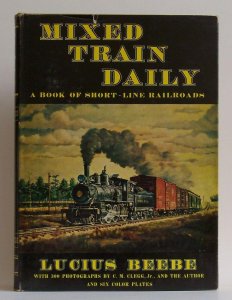SNE
Member
Hi everyone! I've always been a modern day modeler. Being 39 years old I've never seen live steam so I've never been interested by it. While looking for inspiration for a new layout I keep finding myself wanting to model my hometown railroad that never was completed, the Southern New England railroad. I grew up in Sturbridge MA, right near the old roadbed. It's funny because only a few short years ago I discovered that it was supposed to be a railroad...I've been obsessed with it ever since, doing many field trips and and field research. I've always wanted to model the line between Brimfield MA, into Fiskdale MA in a modern day setting. However it just never seemed right, to many what ifs and not enough for operations, mainly through freights to Providence and back to Palmer MA...so it never turned into a layout...just day dreams!
I was watching a WW2 movie the other night, admiring our "greatest generation" like always, and it hit me.......STEAM!!!!!! To be more specific, Late November/ early December 1942. This would provide the traffic I desire, and would incorporate my favorite railroad and the generation I admire the most!!!
The only problem...... I know NOTHING about steam!!!!! Sure I've read about people's steam era layouts, but a milk train?? Ice houses? LOL!! So I figured I'd start this thread to get a good discussion going about steam operations, freight traffic, and passenger traffic!
My plan is to eventually build the real layout in Ho scale in a 10 x 16 room, but for now I'm going to build a small shelf layout to get my feet wet in steam. I'll post up a track plan as we move along.
For now let's talk about a small town situation, a spur running 2 miles to a town off a mainline and terminating there. What type of traffic would it generate? I'm thinking for starters a small station and freight depot...what else? I assume I'll need a turntable to turn the engine around? Or would the engine back up/ push 2 miles?
Would a coal dealer/trestle be appropriate?
I have many questions, looking forward to discussing and sharing this with everyone!!
Joe
Sent from my iPhone using Tapatalk
I was watching a WW2 movie the other night, admiring our "greatest generation" like always, and it hit me.......STEAM!!!!!! To be more specific, Late November/ early December 1942. This would provide the traffic I desire, and would incorporate my favorite railroad and the generation I admire the most!!!
The only problem...... I know NOTHING about steam!!!!! Sure I've read about people's steam era layouts, but a milk train?? Ice houses? LOL!! So I figured I'd start this thread to get a good discussion going about steam operations, freight traffic, and passenger traffic!
My plan is to eventually build the real layout in Ho scale in a 10 x 16 room, but for now I'm going to build a small shelf layout to get my feet wet in steam. I'll post up a track plan as we move along.
For now let's talk about a small town situation, a spur running 2 miles to a town off a mainline and terminating there. What type of traffic would it generate? I'm thinking for starters a small station and freight depot...what else? I assume I'll need a turntable to turn the engine around? Or would the engine back up/ push 2 miles?
Would a coal dealer/trestle be appropriate?
I have many questions, looking forward to discussing and sharing this with everyone!!
Joe
Sent from my iPhone using Tapatalk


